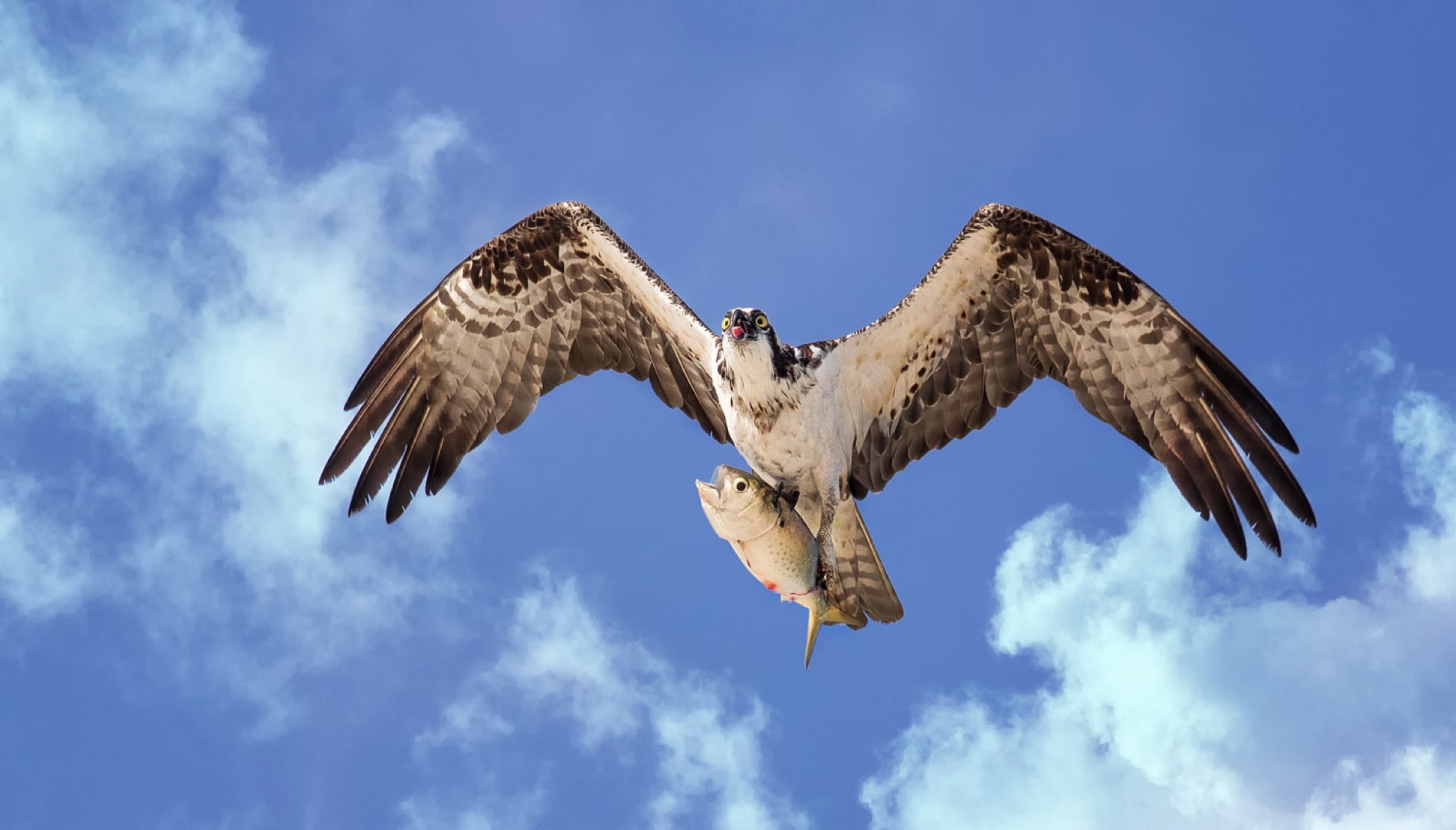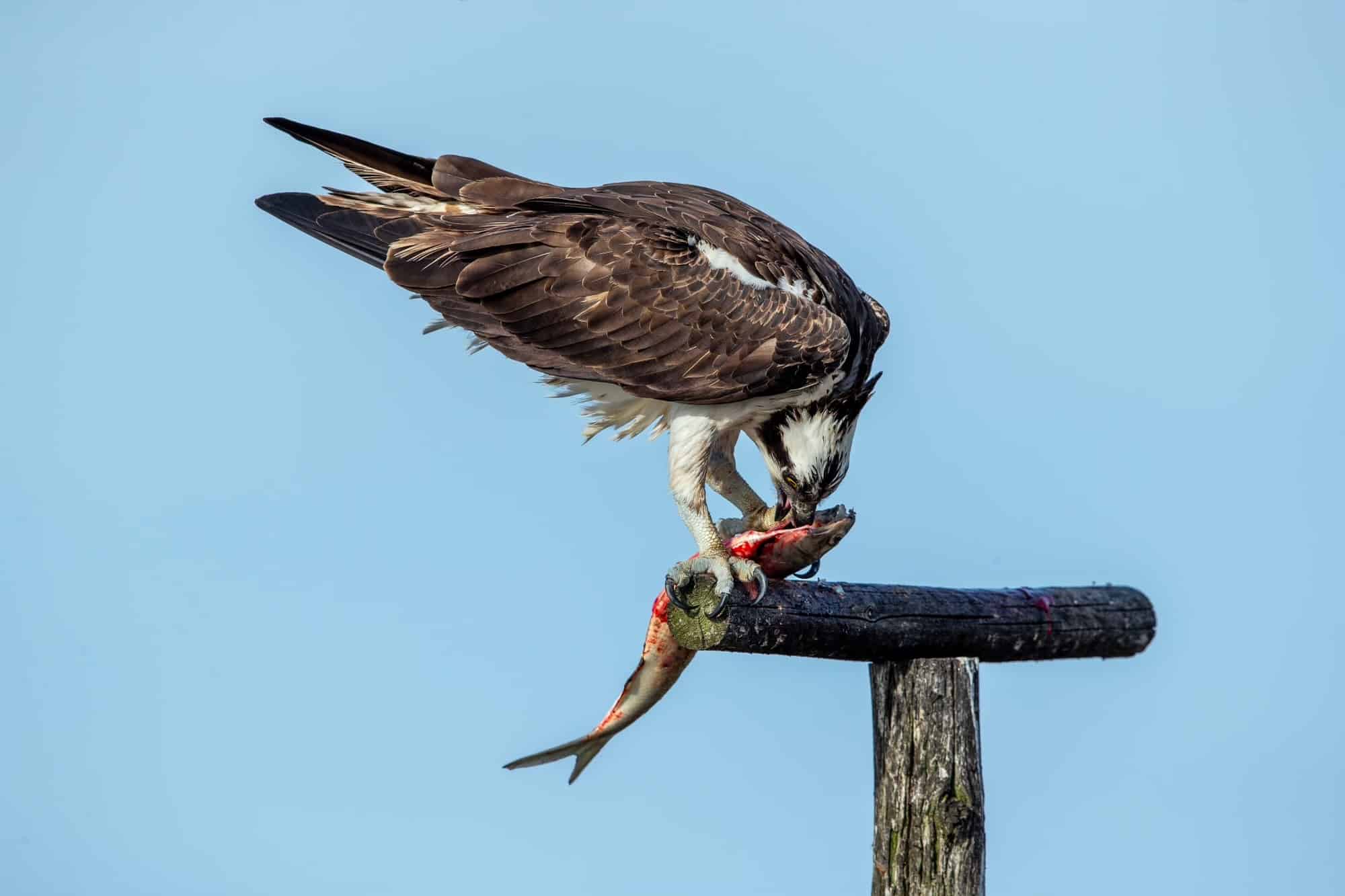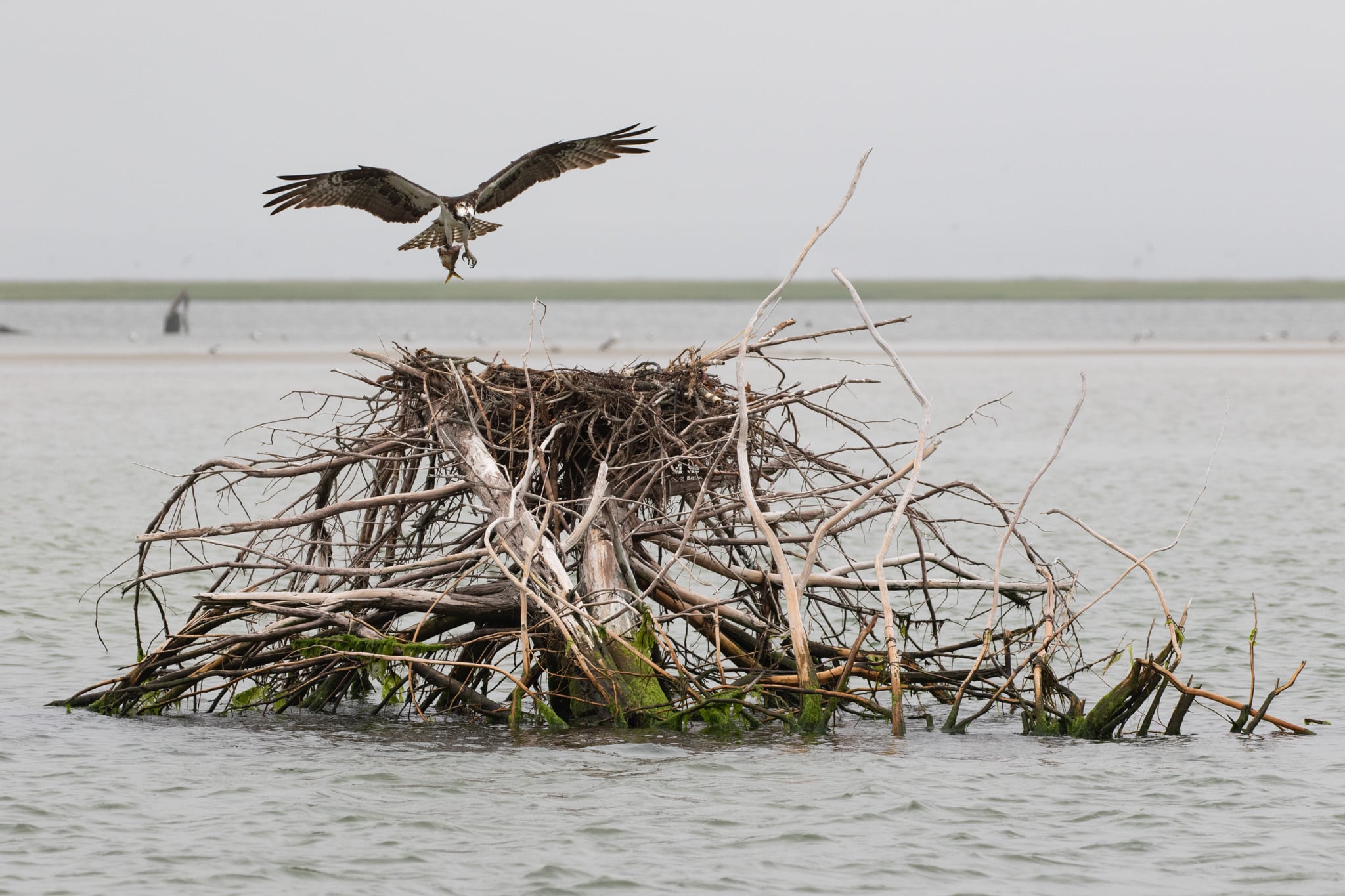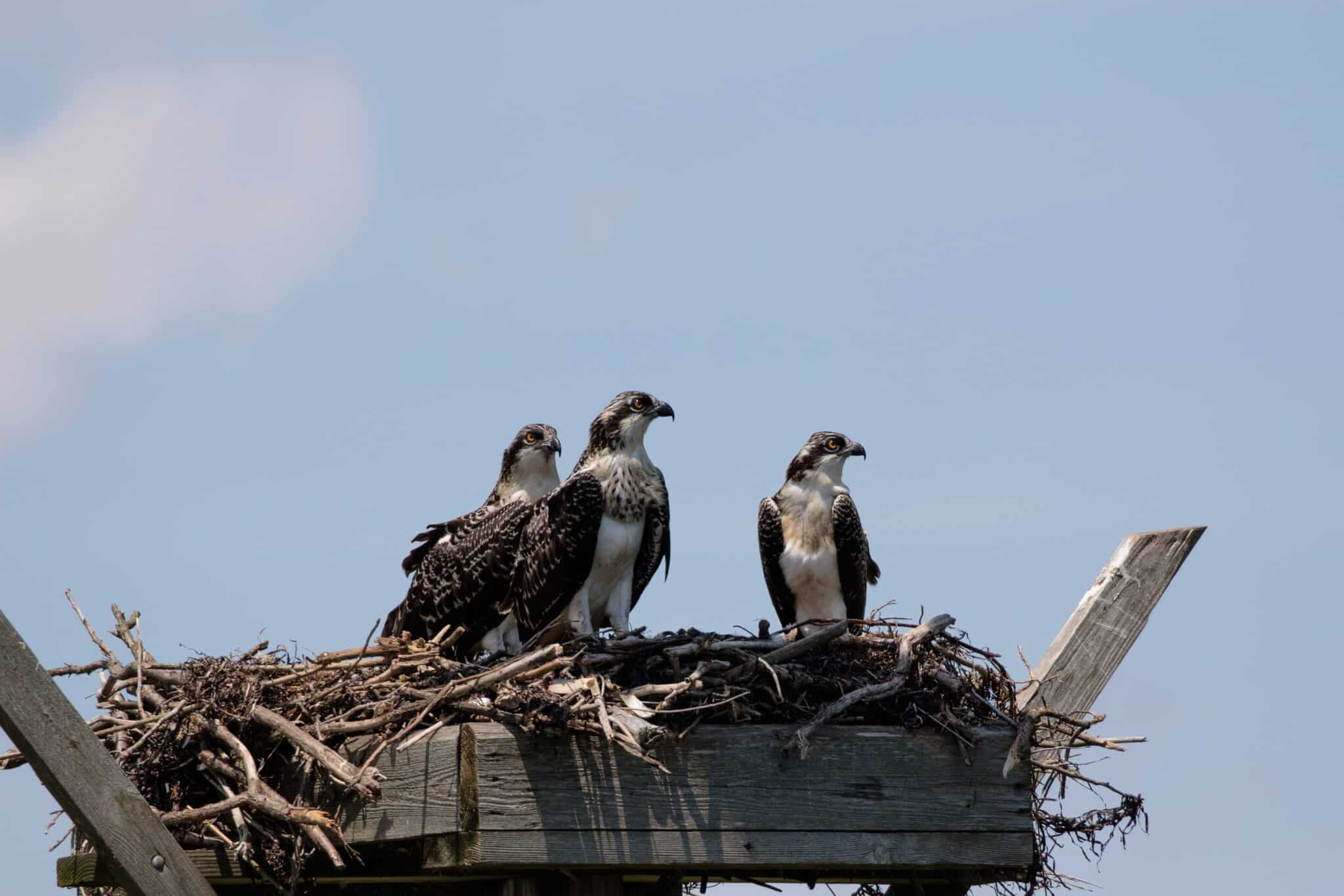Ospreys and Menhaden: A Shared History of Abundance and Decline

Over the past twenty years, I’ve had the privilege of watching New Jersey’s osprey population more than double—from roughly 400 nesting pairs to over 800. While our work to protect and expand nesting habitat has played a role in their comeback, the true foundation of their recovery has been a healthy marine ecosystem and an abundance of prey.
In recent years, however, that picture has shifted. Brood reduction and declining productivity are becoming increasingly common, tied directly to the reduced availability of Atlantic menhaden in nearshore waters. Menhaden have a long history of heavy exploitation, and their scarcity today is once again testing the resilience of ospreys.
The story of ospreys along New Jersey’s coast cannot be told without the story of Atlantic menhaden. For millennia, these two species have been linked in a complex predator/prey relationship. Menhaden — a small, forage fish that is rich in energy and omega-3 fatty acids — have fueled osprey populations for generations, providing the nourishment needed for adults to thrive and for young nestlings to grow strong without access to fresh water. Menhaden consume vast amounts of phytoplankton and form a remarkable link in the marine food chain. They evolved to be eaten.

Menhaden were once so abundant that vast schools darkened the surface of coastal waters, offering a seemingly endless food supply for ospreys and countless other predators. But as industrial fishing ramped up, their numbers plummeted. By the 1950s, the menhaden fishery had expanded into one of the largest on the East Coast, reducing the availability of this vital prey just as ospreys faced other mounting pressures.
By the late 1960s, osprey numbers in New Jersey had crashed to all-time lows — around 50 nesting pairs remained statewide. While pesticides like DDT played a major role in their decline, food stress from depleted menhaden stocks likely added another layer of hardship for these iconic raptors.

Today, both menhaden and ospreys remain symbols of resilience in a rapidly changing world—and reminders of how closely the fate of one species is tied to another. The decline of menhaden is being seen not only in failed osprey reproduction, but also in the struggles of bait fishermen in New York, New Jersey, and Maryland who can no longer reliably catch adult fish.
Protecting forage fish like menhaden is about far more than sustaining a single fishery—it’s about ensuring that ospreys, whales, dolphins, tuna, bluefish, and countless other predators have the food they need to survive. Recreational anglers are also raising alarms, as menhaden overharvest can be linked to declines in popular sportfish like striped bass.

A sustainable menhaden harvest is essential—not only for healthy coastal ecosystems, but for the thriving communities and economies that depend on them.
Ospreys have become today’s “canary in the coal mine,” signaling deeper problems in our coastal ecosystems. Without a rebound in menhaden abundance along New Jersey and the broader Atlantic coast, we risk seeing entire nesting colonies collapse—just as has already occurred along Virginia’s eastern shore. We’re devoted to ensuring that our ospreys continue to thrive and will be looking more closely at the link between ospreys and menhaden. Right now, we’re compiling our field data to guide regulators in making decisions that support the long-term health of both ospreys and menhaden.
Discover more from Conserve Wildlife Foundation of NJ
Subscribe to get the latest posts sent to your email.